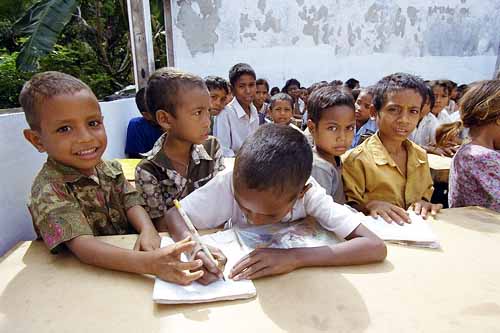
To coincide with the UN Committee on the Rights of the Child releasing its five-yearly report on Australia’s compliance with the Convention on the Rights of the Child, Right Now’s July content is dedicated to Children & Youth in Australia.
Prior to delivering its report, the UN Committee was briefed on the current situation in Australia, including by Frank Hytten, who reflects on the process and a better future for Indigenous children in our interview with him. Adding to an understanding of the report, Associate Professor Paula Gerber’s review of the UN report highlights a number of disturbing criticisms made.
Taking a step back, Associate Professor John Tobin asks “Do Children’s Rights Matter?” and makes the moral, legal, political and instrumental case in a forward-looking reflection on both seeing and hearing children. John also spoke to Right Now Radio about what children’s rights actually are. Emphasising one key right, Chris Varney suggests now is the time to turn up the volume of children’s voices.
Next, two articles focus on recent amendments to the federal Family Law Act. Adiva Sifris considers their effect on children in relation to family violence and shared parenting arrangements. Professor Patrick Parkinson asks whether the amendments, which refer to the UN Convention on Children’s Rights, now bring with it a new focus on children.
To some specific areas of need, Emma Breheny argues for the necessity of diversionary programs to direct young people away from the criminal justice system, while Associate Professor Thomas Crofts suggests the age of criminal responsibility in Australia needs to be reconsidered. Bronwyn Naylor and Bernadette Saunders explain children’s rights in relation to current Australian laws on corporal punishment, and the need for cautious change. To the extreme cases of abuse, Rita Shackel explains the dynamics of disclosure by children of child sexual victimisation, and the implications for investigation and prosecution.
On the topic of education, Marisa MaCague, Meredith Fordyce and Kathryn Finemore point to the need for an inclusive approach to disability in schools. Michelle Sowey explains the use of philosophy for children as a tool for introducing and illuminating human rights concepts, and, more generally, Tanya Kovac raises the need for educating young people about human rights.
Finally, we have paper cut children’s rights illustrations from UNICEF and the story of Malihe and Mahdiye – from Afghanistan to Iran to Indonesia to Christmas Island and finally Melbourne, in a child’s words.


